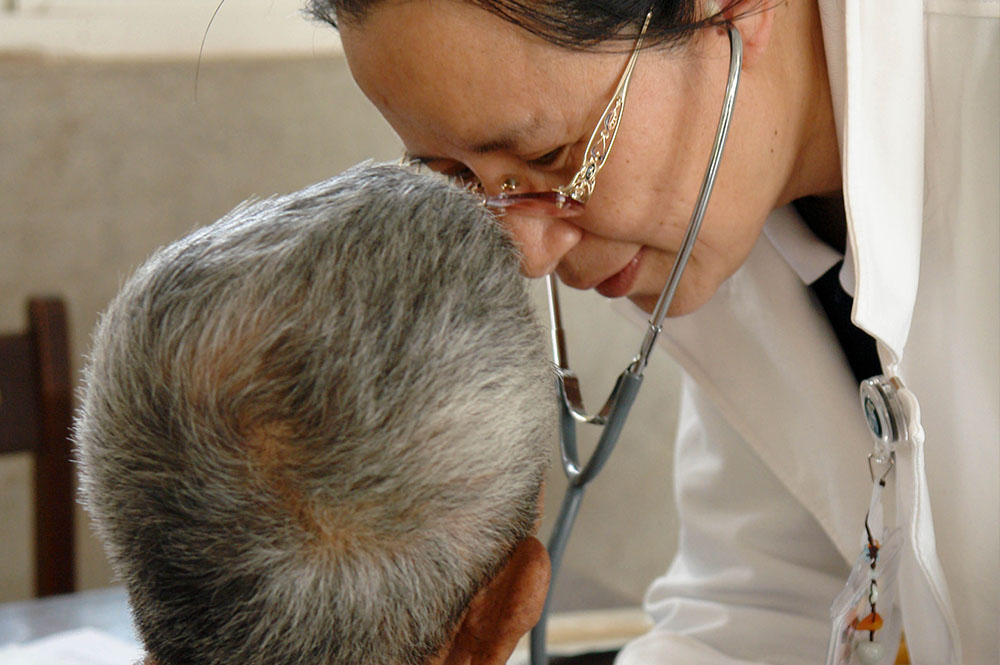
In Memory of Dr. Chao-Jong Chiu
TIMA Taiwan
Chao-Jong Chiu was born in a poor village in Burma (near Yunnan province in China) in April, 1958. She then came to Taiwan for education. On graduating from National Taiwan University Medical School in 1990, Chiu moved to Hualien, and stayed ever since.
"Mama Chiu" was how her colleagues in the hospitals referred to her. The indigenous Bunun tribe people gave her the name of "Gina". Gina, in their dialect, means "Mama". Wherever she was, Chao-Jong Chiu was viewed as the mother whom everyone trusted and relied on.
"As soon as she appeared, we would all quickly put our liquor away. She was like a guardian angel to us." Yongfu Chiu, a police officer of the Ebaho(Vauvu) tribe of Haiduan Township recalled. He knew that Dr. Chiu disliked peoples' drinking habits, and they all knew she really meant well, but they just couldn't stop drinking. Yet they could all feel her sincerity.
As a Chinese immigrant growing up in that remote village in Burma; she, as a child, witnessed the trauma people experienced due to the lack of medical care. At a very early age, she vowed that when she grew up, she would serve poorer people in remote areas of the world.
Twenty years ago, Hualien was somewhat backward. However, she still decided to take her residency training at the Hualien Tzu Chi Hospital in 1993, she first chose to practice gynecology, but later chose to become a family doctor, simply because it would allow her to care for and treat many more patients.
She transferred to a remote village, Fuli (bordering with Taitung County of eastern Taiwan); she took the job as the director and the only doctor of Fuli Health Office. She stayed there for three years. Chao-Jong Chiu then worked in Kuanshan Tzu Chi Hospital in 2001.
From 2001 and on, along with her coworkers and an aboriginal nurse, Chiu would visit patients in the hills, regardless of weather conditions. Nurse Meihua Wang was the most efficient and dedicated partner. This couple could be seen twice a week walking in the shadows of the dimly lit streets. They persistently went knocking on patients' doors. Every week she would travel to the mountains to treat her tribal patients, some living in areas at over one thousand meters above sea level.
Some young members of the community, with alcohol addiction, came to see her for help. Why was she so eager to help these poor, indigenous tribal people? Chiu had previously met a ten-year-old boy who had a drinking problem. He died at the age of twenty from his alcohol addiction. She did not want to see any more precious young lives lost.
Chiu's execution of her medical plan successfully controlled the spread of tuberculosis in three different tribes. She also helped treat patients with stomach cancer, and controlled the symptoms of high blood pressure, diabetes, rheumatoid arthritis and gout.
Alcoholism and tuberculosis issues among the eastern tribes were brought under control, by Dr. Chiu. Chao-Jong Chiu became a Tzu Chi commissioner in 2007. And for years, when TIMA Eastern Taiwan Chapter a free clinic, she was there.
She always took care of her patients, and herself, too. Every three months, Dr. Chiu would have liver functions and liver cancer indicator tests. In April of 2008, she had an abdominal MRI which found no trace of cancer; yet in the months of June and July, her weight dropped five or six kilograms. It was later confirmed that cancer cells were indeed active. Chiu passed away on April 20, 2009. That same afternoon, Chiu lay at the Great Giving Hall in Hualien. She became the first doctor from all Tzu Chi hospitals to enter the Great Giving Hall as a "silent mentor". In September 2011 the body of Dr. Chiu was autopsied in the gross anatomy class for the third grade medical students of Tzu Chi University. The funeral was held not long after the class finished, and part of the ashes of Silent Mentor Dr. Chiu were stored in the "glaze cinerary urn" and placed in the Great Giving Hall at Tzu Chi University in February 2012. Though Dr. Chiu is no longer here, she will be remembered by every tribe she served, and her footprints are forever embedded on each street and pathway throughout those mountain and coastal regions along the southern highway.